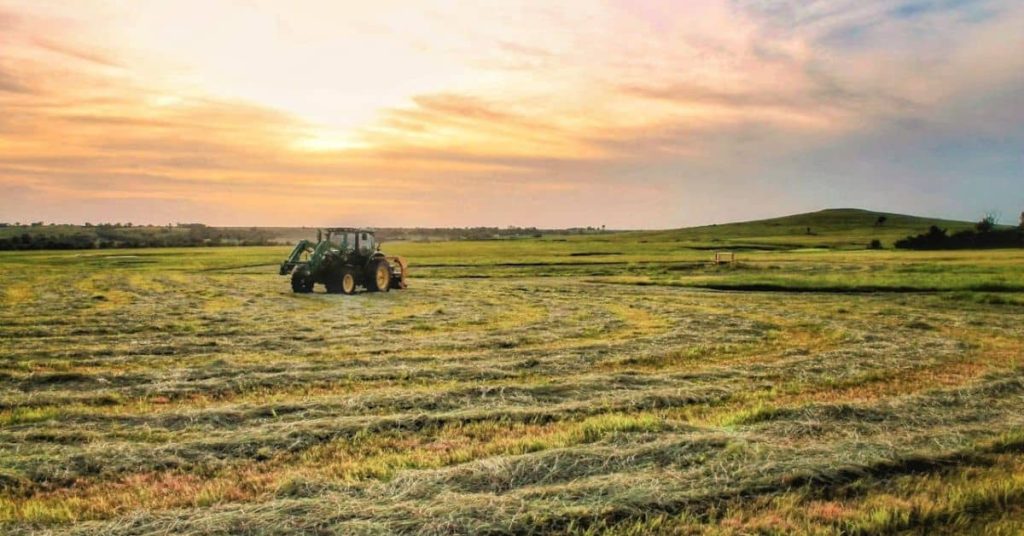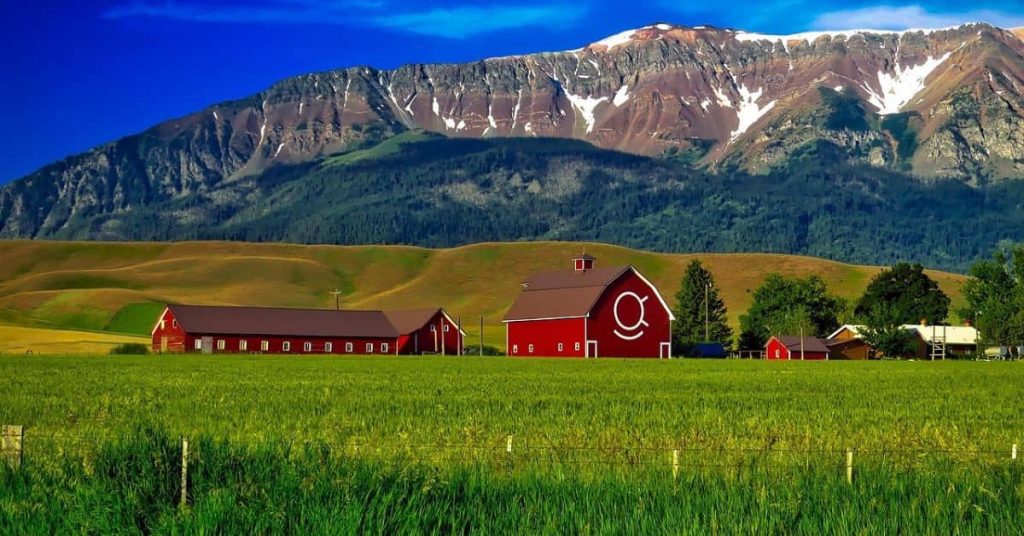Introduction to Best States for Homesteading in Spring
In this article , “8 Best States for Homesteading in Spring 2025: Where Your Green Dreams Thrive!”, we delve into the heart of what makes these states ideal for those looking to turn their green dreams into reality, setting the stage for a journey that intertwines the soul with the soil. As the gentle warmth of spring 2025 beckons, the dream of self-sufficiency and connection with the earth stirs in the hearts of many. This season, synonymous with rebirth and new beginnings, offers an ideal backdrop for embarking on the enriching journey of homesteading.
Across the diverse tapestry of the United States, certain states emerge as beacons for aspiring homesteaders, each offering unique attributes that make them fertile grounds for planting the seeds of a sustainable lifestyle. From the lush valleys of Tennessee to the vast expanses of Texas, these chosen destinations provide not just the soil, water, and climate conducive to growth, but also a sense of community and support pivotal for thriving homesteads.
1. Tennessee – A Symphony of Seasons
In the heart of America’s Southeast, Tennessee unfolds like a carefully composed symphony, each season contributing its unique notes to the melody of homesteading life. As we edge into 2025, the Volunteer State stands out as a beacon for those yearning to connect with the land and cultivate a life of self-sufficiency. With its temperate climate, fertile valleys, and a community that hums with the spirit of cooperation and growth, Tennessee offers an idyllic setting for spring homesteading.

Spring Homesteading in Tennessee
The allure of spring in Tennessee lies not just in its mild weather and the tapestry of blooming flora but in the promise it holds for new beginnings. The state’s climate is a gift to homesteaders, offering a gentle transition from the cool of winter into the warmth of summer. This season is a critical time for planting, with soil temperatures warming up and longer daylight hours encouraging growth. From the traditional crops of tomatoes and cucumbers to the more adventurous endeavors in heirloom varieties and permaculture gardens, Tennessee’s spring is a canvas waiting for the homesteader’s touch.
Practical tips for spring homesteading in Tennessee include:
- Soil Preparation: Take advantage of the cool, early days of spring to prepare your garden beds. Tennessee’s soil, rich and varied across its regions, may require amending, so consider getting a soil test through your local extension office to tailor your soil amendments precisely.
- Water Management: While Tennessee generally enjoys ample rainfall in spring, establishing a rainwater harvesting system can bolster your water independence and ensure your garden’s resilience against dry spells.
- Start with Frost-Tolerant Plants: Early spring can still bring surprise frosts. Begin your planting with frost-tolerant varieties to ensure your garden gets a head start without the risk of cold weather damage.
- Engage with Extension Services: The University of Tennessee Extension offers myriad resources, from gardening guides to pest management tips, helping you navigate the challenges of spring gardening with ease.
Finding Your Community
Beyond the soil and seasons, the essence of homesteading in Tennessee is deeply rooted in community. Across the state, from the rolling hills of the Appalachians to the fertile plains of the Mississippi River, homesteaders find a network of like-minded individuals committed to sustainable living and mutual support.
- Local Farmers’ Markets: These vibrant gatherings are not just places to sell your surplus but hubs of knowledge and camaraderie. Engage with fellow gardeners, swap seeds, and glean insights into local growing practices and challenges.
- Homesteading Workshops and Events: Keep an eye on community boards and social media groups for workshops and events. Topics range from organic gardening and beekeeping to sustainable building techniques, offering valuable learning opportunities and the chance to forge connections.
- Online Forums and Social Media: Platforms like Facebook and Reddit host active communities of Tennessee homesteaders. These online spaces are ideal for asking questions, sharing successes, and even organizing local meet-ups or cooperative buying groups.
In Tennessee, the homesteading journey is underscored by a sense of togetherness and shared purpose. As you embark on your spring homesteading endeavors, remember that the strength of your venture lies not just in the health of your crops but in the vibrancy of your community connections. Whether through shared labor, swapped stories, or joint market ventures, finding your tribe will enrich your homesteading journey, making each challenge more manageable and every success sweeter.
2. Missouri – The Heartland’s Hidden Gem
Nestled in the heart of America, Missouri emerges as a verdant oasis for spring homesteaders, a place where the fertile soil and gentle landscapes whisper promises of abundant harvests. As we venture into the spring of 2025, this state, often celebrated for its iconic rivers and sprawling plains, invites those with a passion for the land to explore its untapped potential. Missouri’s blend of affordability, rich agricultural heritage, and supportive community frameworks makes it an unparalleled sanctuary for those seeking to cultivate a life intertwined with the rhythms of nature.

Spring Homesteading in Missouri
In the embrace of Missouri’s spring, the earth awakens with a fervor, offering a canvas lush with potential for homesteaders. The state’s unique blend of geographical features and climatic conditions creates a mosaic of micro-environments, each with its own promise for cultivation. From the rolling hills of the Ozarks to the fertile floodplains along the Missouri and Mississippi Rivers, the land here is ripe for a diverse array of crops and livestock, setting the stage for a season of planting, growth, and renewal.
Embracing spring homesteading in Missouri involves:
- Diverse Crop Selection: With its moderate climate, Missouri is suited for a wide variety of crops. Consider starting with hardy vegetables like kale, spinach, and peas, and gradually introduce warm-season crops as the risk of frost diminishes.
- Soil Management: Leverage Missouri’s rich soil by incorporating organic matter and considering cover crops to enhance soil health and fertility, laying the groundwork for bountiful harvests.
- Pest and Disease Vigilance: Stay ahead of common pests and diseases by employing integrated pest management practices and choosing disease-resistant plant varieties, ensuring the vitality of your spring garden.
Water Abundance: A Homesteader’s Dream
A key factor that sets Missouri apart in the realm of homesteading is its wealth of water resources. The state’s numerous rivers, streams, and lakes, coupled with an ample rainfall, provide a lifeline for homesteads, ensuring that water – the essence of life – is in generous supply. This abundance not only sustains the homestead’s agricultural needs but also opens avenues for innovative water management and conservation practices.
To harness Missouri’s water abundance for your homestead:
- Rainwater Harvesting: Implement systems to capture and store rainwater for irrigation, reducing dependence on external water sources and ensuring your homestead’s resilience against dry periods.
- Water Conservation Techniques: Adopt practices such as drip irrigation and mulching to minimize water waste and ensure that every drop is utilized efficiently, protecting this precious resource.
- Aquatic Homesteading Opportunities: Explore the potential for aquaculture or hydroponic systems, leveraging Missouri’s water richness to diversify your homesteading activities and enhance your self-sufficiency.
In the heart of the heartland, Missouri stands as a testament to the enduring spirit of homesteading, offering a blend of natural resources and communal support that beckons to those eager to forge a life in harmony with the land. As you step into the spring of 2025, let Missouri’s hidden gems guide your homesteading journey, transforming your green aspirations into a thriving reality.
3. Vermont – An Organic Homesteading Haven
Nestled within the verdant landscapes of New England, Vermont stands as a beacon for those aspiring to a life of organic homesteading. As we approach the spring of 2025, this state continues to distinguish itself through its unwavering commitment to sustainable living and organic farming practices. Renowned for its picturesque countryside, community-oriented ethos, and stringent environmental standards, Vermont offers a nurturing ground for homesteaders who prioritize ecological harmony and wish to contribute to a sustainable future.
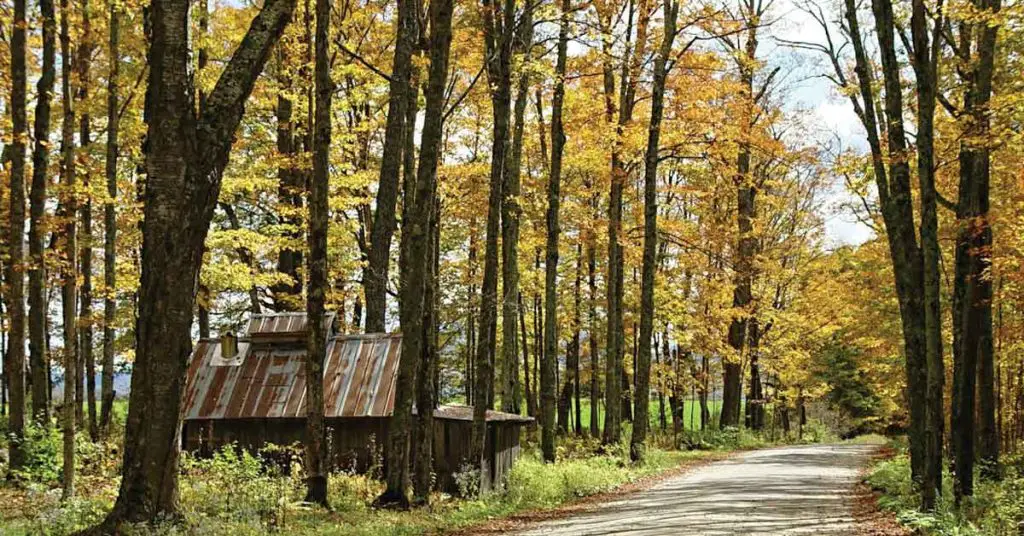
Spring Homesteading in Vermont
The onset of spring in Vermont is a time of renewal and awakening, an ideal period for beginning or expanding homesteading endeavors. The state’s fertile soil, abundant natural resources, and supportive agricultural policies create an optimal environment for cultivating a wide array of crops, raising livestock, and engaging in various sustainable farming activities. Vermont’s dedication to organic practices and sustainable living not only fosters a healthier ecosystem but also encourages a strong sense of community among farmers and homesteaders, all united by a shared commitment to preserving the natural beauty and integrity of their surroundings.
Grants and Incentives for Green Living
Vermont showcases a strong commitment to sustainable agriculture through a broad array of grants and incentives designed to foster environmentally friendly farming practices and enhance the organic agriculture sector. Here’s an expanded look at these initiatives:
Agriculture Development Grants
- Target Group: These grants are intended for small to mid-sized agricultural producers and value-added processors, focusing on key industries such as meat, produce, and maple production.
- Objectives:
- Enhance climate resiliency across agricultural operations.
- Improve operational efficiency to ensure sustainable farming practices.
- Elevate food safety and quality through modernization and training.
- Application of Funds: Eligible projects include but are not limited to upgrades in infrastructure, acquisition of advanced equipment, expansion of storage facilities, enhancement of processing capabilities, and comprehensive training programs.
- Impact: These grants aim to solidify Vermont’s agricultural sector’s foundation, making it more adaptable to climate changes and market demands, thus ensuring long-term sustainability.
Farmer Resilience Grants by NOFA-VT
- Purpose: To support farm-based projects that significantly contribute to long-term resilience and sustainability, with a particular emphasis on organic farming methods.
- Scope: The grants are versatile, supporting a wide array of initiatives from soil health improvement to energy efficiency, water conservation, and beyond, reflecting Vermont’s comprehensive approach to sustainable agriculture.
- Community and Environmental Focus: These projects often have strong components of community engagement and environmental stewardship, aiming to create a ripple effect that benefits the wider community and ecosystems.
- Supporting Innovation: Encouraging innovative practices that can lead to breakthroughs in organic farming and sustainable agricultural techniques.
Expanded Support and Resources
- Technical Assistance: Both programs often come with additional support, such as technical advice from experts, access to a network of like-minded farmers, and opportunities for collaborative projects.
- Market Access: Enhancing market opportunities for organically produced goods through promotional support and access to state-wide farmers’ markets.
- Educational Workshops and Seminars: Offering continuous learning opportunities through workshops, seminars, and field days to keep Vermont’s farming community at the forefront of agricultural innovation.
Vermont’s strategic initiatives in agricultural grants and incentives illustrate a holistic and forward-thinking approach to farming and homesteading. By nurturing an environment conducive to organic and sustainable practices, the state not only bolsters the agricultural sector’s resilience but also ensures the wellbeing of its communities and natural landscapes. This support framework provides a robust foundation for both seasoned and aspiring farmers to realize their visions of a sustainable agricultural future in Vermont.
For those interested in diving deeper into Vermont’s agricultural grants and incentives, exploring the Vermont Agency of Agriculture, Food and Markets and the Northeast Organic Farming Association of Vermont (NOFA-VT) websites can offer extensive information and guidance on how to access these resources.
4. North Carolina – A Temperate Homesteading Treasure
Nestled between the rolling Appalachian Mountains and the vibrant Atlantic coast, North Carolina stands as a temperate homesteading treasure. Its diverse landscapes and climates offer a unique blend of opportunities for those seeking to embark on a journey of sustainable living and self-sufficiency. With a long growing season, varied geography, and a community that embraces sustainable practices, North Carolina is an idyllic setting for spring homesteading.
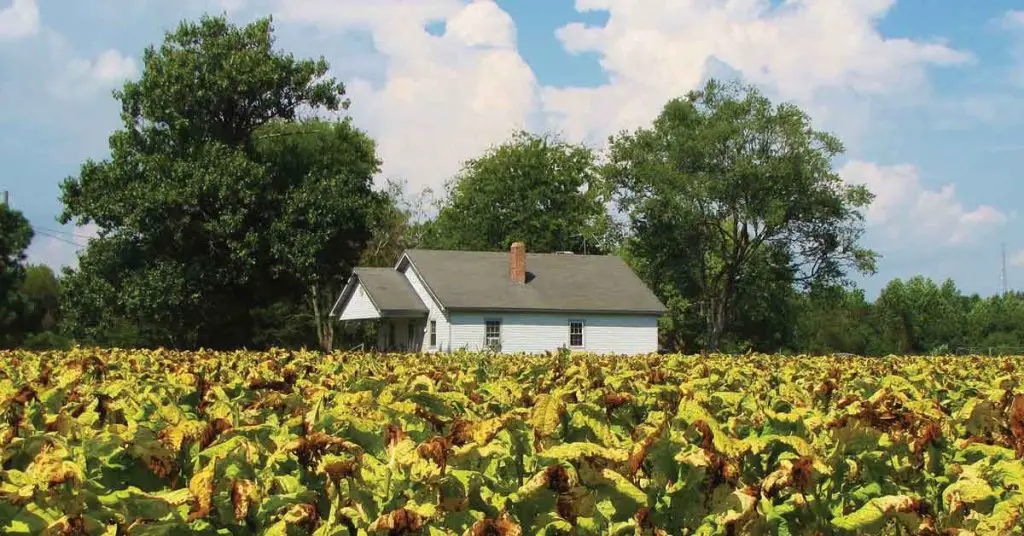
Spring Homesteading in North Carolina
Spring in North Carolina is a season of abundant growth, thanks to the state’s long growing season and diverse climate. From the cool, temperate conditions in the Appalachian Mountains to the warmer, humid subtropical climate of the Coastal Plain, North Carolina provides a fertile ground for a wide range of crops and livestock. Sustainable farming practices are a way of life here, focusing on soil health, water conservation, and biodiversity to maintain the natural beauty and agricultural productivity of the region. Homesteaders can grow a variety of crops such as sweet potatoes, tobacco, and various greens in the warmer areas, while apples, berries, and leafy vegetables thrive in cooler regions. Livestock options like chickens, goats, and bees are well-suited to North Carolina’s climate, offering eggs, milk, pollination, and honey production.
A Thriving Small-Farm Community
North Carolina’s small-farm community thrives on a foundation of connectivity, mutual support, and a shared commitment to sustainable living. Here’s an expanded look into this vibrant community:
Community Engagement and Support
- Local Homesteading Groups and Social Media: Platforms such as Facebook groups and forums provide spaces for homesteaders to connect, share advice, and offer support. These communities are invaluable for both novice and experienced homesteaders.
- Agricultural Fairs and Events: Annual events bring the community together to showcase their produce, livestock, and crafts, fostering a sense of pride and camaraderie among homesteaders.
- Knowledge Sharing: Workshops, seminars, and classes on topics ranging from organic gardening to sustainable building practices are widely available, often hosted by local agricultural extensions, community colleges, and gardening clubs.
Regional Diversity
- The Coastal Plain: Offers a flat landscape with sandy soil, ideal for certain types of crops and livestock suited to these conditions.
- The Appalachian Mountains: Known for their fertile soil and abundant natural resources, these areas provide a different set of opportunities and challenges for homesteaders.
- The Piedmont Region: Acts as a middle ground with its rolling hills and varied landscapes, offering diverse homesteading possibilities.
Legal and Environmental Considerations
- Zoning Laws and Building Permits: Generally homesteader-friendly, these regulations vary by county, allowing for a broad spectrum of activities from small-scale farming to larger agricultural projects.
- Sustainable Practices: Emphasis on eco-friendly farming techniques and sustainable living practices helps ensure the long-term viability of homesteading ventures in the state.
Finding the Right Fit
- Land Selection: Whether you’re looking to start anew on undeveloped land or prefer to rejuvenate an older property, North Carolina’s diverse regions offer a range of options to suit various homesteading goals and preferences.
- Community Resources: Leveraging local resources, such as cooperative extensions and agricultural agencies, can provide guidance, support, and information critical to the success of homesteading endeavors.
North Carolina’s commitment to supporting a thriving small-farm community, coupled with the state’s diverse environments and supportive legal framework, makes it an attractive destination for homesteaders. The state’s agricultural heritage and ongoing commitment to sustainable practices offer a promising landscape for those looking to embark or continue their journey towards self-sufficiency in spring 2025 and beyond.
For more detailed insights and resources, consider connecting with local homesteading groups in North Carolina and exploring the wealth of information available through state agricultural extensions and community colleges.
5. Texas – The Vast Frontier of Possibilities
Texas, with its vast landscapes and diverse climates, offers a rich tapestry for homesteaders dreaming of self-sufficiency and connection with the land. From the rolling plains of North and Central Texas to the lush, wooded areas of East Texas and the arid expanses of the West, the Lone Star State is a land of endless opportunities for those ready to embrace the homesteading life.

Spring Homesteading in Texas
The spring season in Texas sets the stage for a vibrant homesteading journey. With a growing season that extends from March through November in most regions, homesteaders have ample time to cultivate a variety of crops and tend to their livestock. The state’s large land availability allows for both small-scale gardens and expansive farming operations, catering to a wide range of homesteading aspirations.
In regions like North and Central Texas, homesteaders can enjoy large amounts of rangeland ideal for livestock, alongside the cultivation of popular crops such as cotton, wheat, and vegetables. East Texas, known for its “Piney Woods,” offers woodland pastures perfect for grazing, and its long growing season supports a diverse array of crops, including berries and peaches. Meanwhile, the Gulf Coast’s humid subtropical climate and ample rainfall promote the growth of rice, grain sorghums, and hay, despite the challenges posed by flooding and hurricanes. West Texas, with its shorter growing season and need for irrigation, still supports agriculture through crops like cotton and grains, as well as vineyards.
Renewable Energy and Sustainability
Texas is a leader in the renewable energy sector, offering a wide array of opportunities for homesteaders interested in sustainable living:
Wind Power
- Nation’s Leader: Texas leads the U.S. in wind power generation, boasting numerous wind farms across the state.
- Community Wind Projects: These initiatives allow for collective investment and benefits from wind energy, making it an attractive option for homesteaders.
Solar Energy
- Optimal Conditions: With high average peak sunlight hours in many regions, solar energy is a feasible and efficient option for Texas homesteaders.
- Incentives: The state offers various tax credits, rebates, and buy-back programs to encourage solar power adoption.
Biomass Fuels
- Bioenergy Potential: Texas’s agricultural abundance contributes to its capacity for producing biomass fuels, offering an alternative energy source for homesteaders.
- Sustainability: Utilizing bioenergy can help reduce waste and promote a circular economy within homesteading practices.
Geothermal and Hydroelectric Power
- Geothermal Opportunities: Though less prominent, the potential for geothermal energy exists, providing a stable and constant energy source.
- Hydroelectric Projects: Small-scale hydroelectric systems can be an option for homesteaders near water sources, adding to the diversity of renewable energy options.
Community and Sustainability
- Environmental Stewardship: Homesteaders in Texas are part of a growing community dedicated to sustainable living and environmental respect.
- Diverse Landscapes: From fertile lands and rangelands to coastal areas and rugged terrain, Texas’s varied geography supports a wide range of sustainable homesteading endeavors.
Embracing renewable energy in Texas not only contributes to a sustainable and self-reliant lifestyle but also aligns with broader environmental goals. The state’s commitment to renewable resources, coupled with the supportive community and diverse landscapes, creates an ideal setting for homesteaders to thrive sustainably.
For more information on renewable energy options in Texas and how to integrate them into your homesteading lifestyle, exploring resources from the Texas Renewable Energy Industries Alliance (TREIA) and the Texas Solar Energy Society (TXSES) can be beneficial.
6. Oregon – Sustainability and Natural Beauty
Oregon, renowned for its lush landscapes and a strong commitment to environmental stewardship, presents an idyllic setting for spring homesteading. The state’s diverse ecosystems, ranging from dense forests to fertile valleys, offer a rich backdrop for sustainable living practices.

Spring Homesteading in Oregon
Spring in Oregon is a season of renewal, where the natural beauty of the state truly comes to life. The region’s emphasis on environmental stewardship is evident in initiatives like the Oregon Spring Cleanup organized by SOLVE, which highlights the community’s commitment to preserving the state’s natural beauty. These efforts not only enhance the ecological well-being of Oregon but also create a nurturing environment for homesteaders.
The Oregon Department of Forestry offers various programs aimed at increasing the environmental quality and monetary value of forestland and other natural resources. These initiatives, ranging from growing new forests to conserving existing ones and protecting water and natural resources, underscore Oregon’s dedication to sustainable forestry practices. Such programs provide financial incentives and technical assistance to landowners, encouraging responsible forest management and conservation efforts that align with the goals of many homesteaders.
Community and Education in Homesteading
Oregon’s commitment to sustainability and environmental stewardship is deeply integrated into its community and educational structures, making it a fertile ground for spring homesteading:
Educational Programs and Resources
- Oregon State University (OSU): Oregon State University offers Environmental Sustainability and Stewardship Graduate Programs, tapping into the expertise of internationally ranked faculty in forestry, oceanography, fisheries, and wildlife. These programs aim to arm students with the necessary knowledge and skills for impactful environmental stewardship.
- Master’s and Doctoral Programs: Cover a broad spectrum of environmental science, engineering, and management, underlining Oregon’s dedication to education as a fundamental pillar of sustainability.
Community Engagement and Support
- Homesteading Groups and Networks: Oregon boasts a vibrant community of homesteaders who share knowledge, resources, and support through various platforms, including social media, community meetings, and local events.
- Workshops and Classes: Regularly organized by agricultural extensions, community colleges, and local gardening clubs, these educational opportunities focus on organic gardening, sustainable building practices, and other relevant topics to homesteading.
- Farmers Markets and Co-ops: Serve as community hubs where homesteaders can sell their produce, connect with fellow agriculturists, and engage in the local sustainable food movement.
Sustainability Initiatives
- Statewide Sustainability Programs: Oregon’s government and non-profit organizations offer various programs aimed at promoting sustainable practices in agriculture, energy, and waste management.
- Renewable Energy Support: With an abundance of natural resources, Oregon encourages the use of renewable energy through incentives and educational programs, further strengthening the homesteading community’s commitment to sustainability.
Oregon’s emphasis on combining natural beauty with a robust framework of community support and educational resources provides an ideal backdrop for those looking to embark on or continue their homesteading journey. The state’s initiatives in promoting environmental stewardship and sustainable living practices offer homesteaders a supportive environment to live in harmony with nature while contributing to the preservation and enhancement of Oregon’s diverse ecosystems.
For those interested in exploring homesteading in Oregon further, reaching out to local homesteading groups, attending workshops, and connecting with the agricultural community can provide valuable insights and resources. Additionally, exploring Oregon State University’s offerings in environmental sustainability and stewardship programs can open up new avenues for education and involvement in sustainable practices.
7. Idaho – Embracing the Homesteading Spirit
Idaho, with its vast and varied landscapes, offers a unique blend of opportunities for those looking to embrace the homesteading spirit. From the fertile plains of Magic Valley to the rugged beauty of Central Idaho, the state provides an ideal backdrop for a self-sufficient lifestyle.

Spring Homesteading in Idaho
Springtime in Idaho is a period of awakening, where the natural world comes to life after the long winter months. The state’s relaxed regulations offer a sense of freedom to homesteaders, allowing for a wide range of activities from agriculture to livestock raising. With 75% of its electricity coming from renewable resources, Idaho supports sustainable living through various residential energy incentives, loan programs, and tax deductions. Solar and wind energy are particularly viable options, given the state’s average of 4.92 peak sun hours per day and the straightforward permitting process for turbine construction.
Idaho’s abundant water sources, including rivers, streams, and aquifers, are crucial for homesteading, though permits are generally required for water systems. The state’s approach to waste management is more relaxed compared to others, allowing for a variety of waste systems, including septic systems and compost toilets, given the proper permits and standards are met.
Overcoming the Challenges of Winter
Preparing for the productive spring season in Idaho requires thoughtful planning and adaptation to overcome the challenges posed by the state’s long winters. Strategies include:
- Selecting Appropriate Crops: The vast range in growing season lengths, from just 30 days in high mountain areas to 250 days in the valleys and plains, necessitates careful selection of crops that can thrive in your specific region.
- Utilizing Greenhouses: To extend the growing season and protect against frost, many Idaho homesteaders turn to greenhouses, which can be especially beneficial in areas with shorter growing periods.
- Infrastructure for Livestock: In the colder mountainous regions, significant infrastructure and investment might be needed to raise animals successfully. Choosing livestock suited to the climate and ensuring adequate shelter and food sources during the winter are key.
- Water Management: Implementing rainwater harvesting and collection systems can mitigate the risks associated with droughts and floods, ensuring a consistent water supply for your homestead.
- Emergency Preparedness: Having a well-stocked supply of essential items and preparing for natural disasters like wildfires, droughts, and flooding is crucial for resilience in Idaho’s varied climate.
By embracing the spirit of independence and self-reliance, homesteaders in Idaho can thrive, connecting deeply with the land and forging a sustainable future. Whether you’re drawn to the agricultural potential of Magic Valley or the timber-rich landscapes of Central Idaho, this state offers a canvas for your homesteading dreams.
8. Montana – Wide Open Spaces and Self-Reliance
Montana, often referred to as “Big Sky Country,” is renowned for its vast landscapes, fertile environment, and thriving agricultural economy. Agriculture is the state’s largest industry, making it an appealing destination for homesteaders who value the iconic American West lifestyle, complete with images of cowboys and vast tracts of open grazing land.
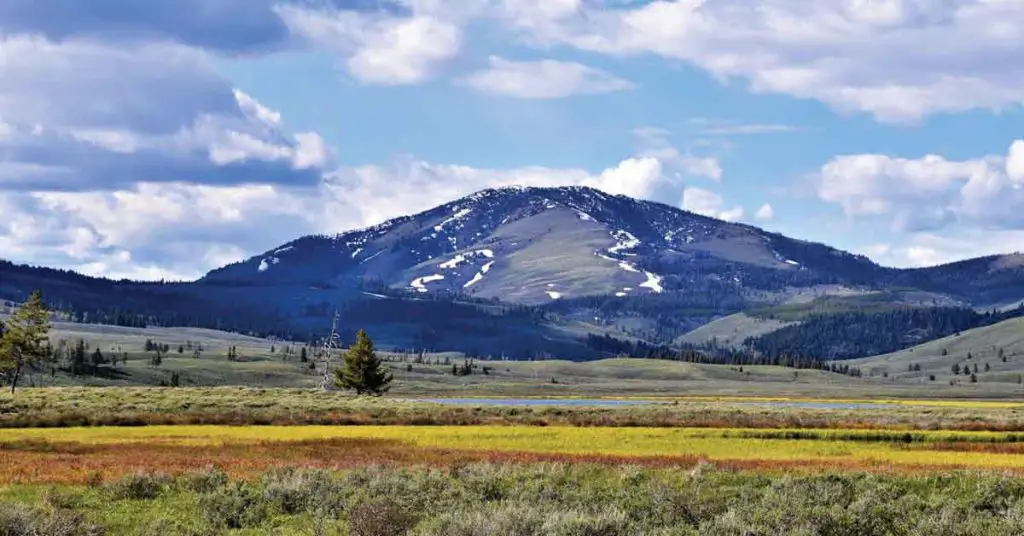
Spring Homesteading in Montana
Spring in Montana brings about the awakening of its rich soil and generous seasons, which are surprisingly accommodating for a variety of crops despite the state falling mostly within USDA plant hardiness zones 3-6. Homesteaders can indulge in growing grains such as certified organic wheat, dry peas, lentils, and flax, alongside vegetables like sweet corn, cabbage, beans, and more. The state is also conducive to raising animals, thanks to its status as an open-range state, allowing vast stretches of land for livestock grazing. Sustainable grazing practices are a collaborative effort between state and federal agencies and Montana’s ranchers, ensuring a balance between livestock rearing and land conservation.
Montana’s low cost of living, combined with its affordable land and low crime rates, make it a favorable state for off-grid life and homesteading. While the growing season might be shorter compared to other regions, the prime grasslands and windy nature of the state are perfect for livestock and wind turbine usage, respectively.
Community Resources and Support
Montana’s community resources and support for homesteaders are extensive, emphasizing the state’s commitment to sustainable agriculture and local food systems.
- ‘Grow Montana’: Organizations like Grow Montana advocate for policies that support sustainable Montana-owned food production, processing, and distribution, ensuring citizens’ access to healthy local foods. Their efforts include promoting community economic development and education policies relevant to food and agriculture in Montana .
- The Community Food & Agriculture Coalition (CFAC): This is another pivotal resource, focusing on increasing the production and consumption of Montana-grown foods. CFAC aids in ensuring farmland is actively used for production by supporting new and early-stage farmers through workshops, resources, and collaboration with statewide service providers .
- The Montana Farmers Market Network: This is facilitated by the National Center for Appropriate Technology (NCAT) and partners like the Community Food and Agriculture Coalition (CFAC), plays a significant role in promoting healthy communities through farmers’ markets. This network aims to support farmers and ranchers by enabling direct sales to customers, thus circulating money through the local economy and strengthening the community.
- Montana Department of Agriculture: This offers numerous programs ranging from market and business development to regulatory services that protect agricultural producers, consumers, and the environment. Their initiatives are designed to support the state’s number one industry and ensure that agriculture remains a thriving and sustainable sector.
For homesteaders in Montana looking to embrace the spirit of sustainable agriculture, tapping into these resources can provide valuable support and guidance. Whether it’s through participating in local farmers’ markets, engaging with organizations like Grow Montana and CFAC, or utilizing the services offered by the Montana Department of Agriculture, there’s a wealth of knowledge and assistance available to cultivate a sustainable and self-reliant lifestyle amidst Montana’s wide-open spaces.
For more detailed information and to explore how these resources can support your homesteading journey, consider visiting the websites of Grow Montana, the Community Food & Agriculture Coalition (CFAC), the Montana Farmers Market Network, and the Montana Department of Agriculture.
Recap: Best States for Homesteading in Spring
As we explore the vast and vibrant landscapes of the United States, the allure of spring homesteading in 2025 beckons with promise and potential. From the mild climates of Tennessee and Missouri to the sustainable ethos of Vermont and Oregon, each state offers unique opportunities for those eager to connect with the land. The wide-open spaces of Texas and Montana invite homesteaders to embrace self-reliance amidst natural beauty, while the fertile valleys of Idaho and the diverse climate of North Carolina provide a rich tapestry for cultivation and community.
These eight states, each with its distinct charm and resources, present an idyllic backdrop for spring homesteading. Whether you’re drawn to the organic havens, the renewable energy prospects, or the community-driven agricultural initiatives, there’s a place under the expansive American sky waiting for your homesteading dream to take root.
I encourage you to delve deeper into the unique offerings of each state, considering your specific homesteading goals and lifestyle preferences. The journey towards sustainable living and self-sufficiency is enriched by the diversity and abundance these states provide. Let the spring of 2025 be the canvas for your green dreams to thrive, as you explore the best states for homesteading and forge a connection with the land that sustains us all.
Disclaimer: The information provided in this article is for general informational purposes only and is not intended to be a substitute for professional advice. The author of this article does not claim to be an expert in homesteading and the information provided should not be relied upon to make decisions about your own homesteading journey. Please do your own research and consult with a qualified professional before making any decisions about your homestead.
Share via:
Shaun Alexander is the main writer and editor for HomesteadingSimple.com. With a strong passion for homesteading and sustainability, Shaun has dedicated his life to learning and sharing information about a simple, fulfilling existence tied to the land. His expertise ranges from gardening and livestock management to off-grid living and DIY projects, reflecting the diverse skills necessary for a successful homesteading lifestyle. Shaun’s goal is to inspire and educate others about the possibilities of homesteading, whether in rural, suburban, or urban settings, and to provide practical advice and tips for both beginners and seasoned homesteaders. He believes in a future where more people return to their roots, embracing a life of self-sufficiency and harmony with nature.




